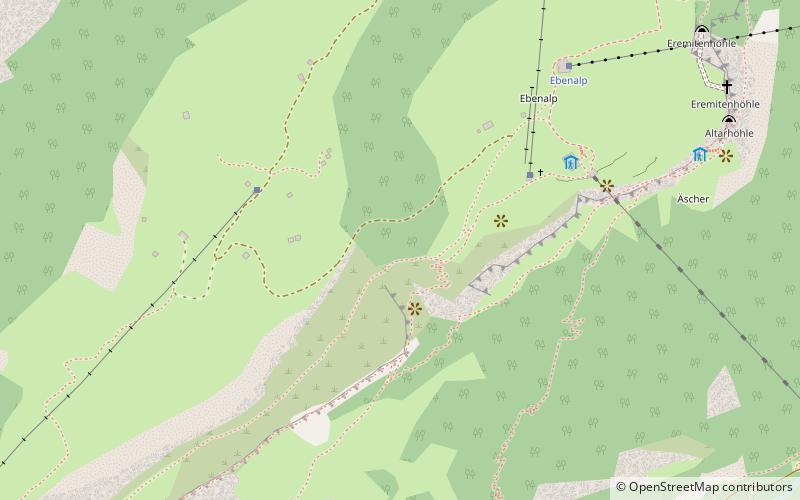Wildkirchli


Facts and practical information
Nestled within the rugged Alpstein massif of Switzerland lies the Wildkirchli, an archaeological site that transports visitors back to the early chapters of human history. This prehistoric site is composed of three caves, which served as a sanctuary for hermits and a home for prehistoric man.
Excavations at Wildkirchli have unearthed a wealth of information about the region's Paleolithic inhabitants. The caves, named Ebenalp, Wildkirchli, and Alter Stein, were discovered to contain artifacts and fossils dating back to 40,000 to 70,000 years ago, offering a glimpse into the life of Neanderthals and early Homo sapiens.
The site gained significant attention in the late 19th century when traces of bear bones and stone tools were found within its depths. Further studies revealed that the caves were used by bears for hibernation and by humans for shelter during the Upper Paleolithic period. The intertwining of human and animal activity has made Wildkirchli a key site for understanding the interaction between early humans and their environment.
Today, Wildkirchli is accessible via a cable car that ascends the steep slopes of the Ebenalp. The caves themselves are part of a larger tourist attraction that includes the Wildkirchli Museum, which displays the findings from the site and provides educational insights into the life of prehistoric cave dwellers. A chapel built into the rock face by hermits in the 17th century adds to the historical tapestry of the site, bridging the gap between ancient and more recent human endeavors.
Wildkirchli – popular in the area (distance from the attraction)
Nearby attractions include: Seealpsee, Sämtisersee, Säntis, Fälensee.











